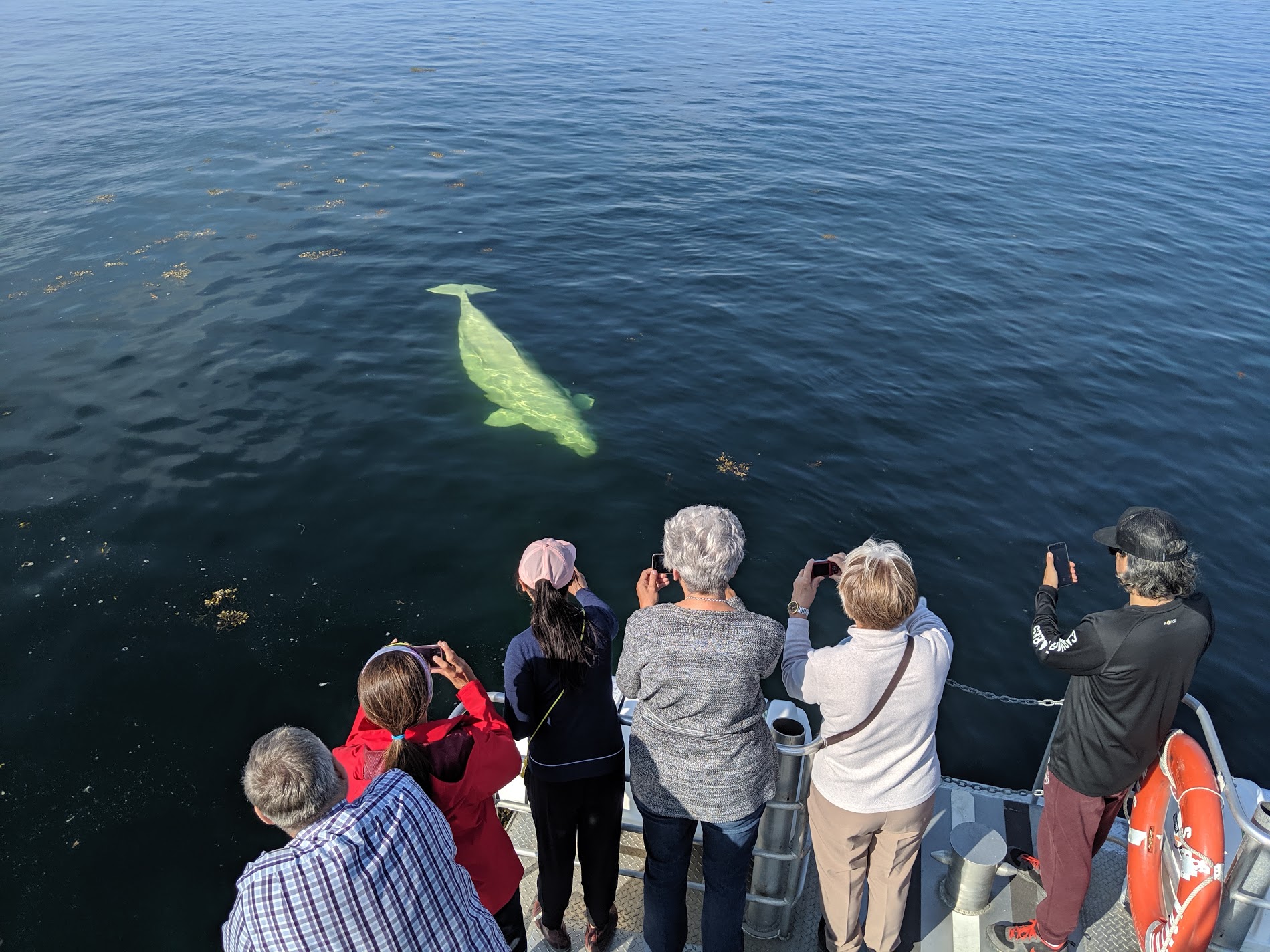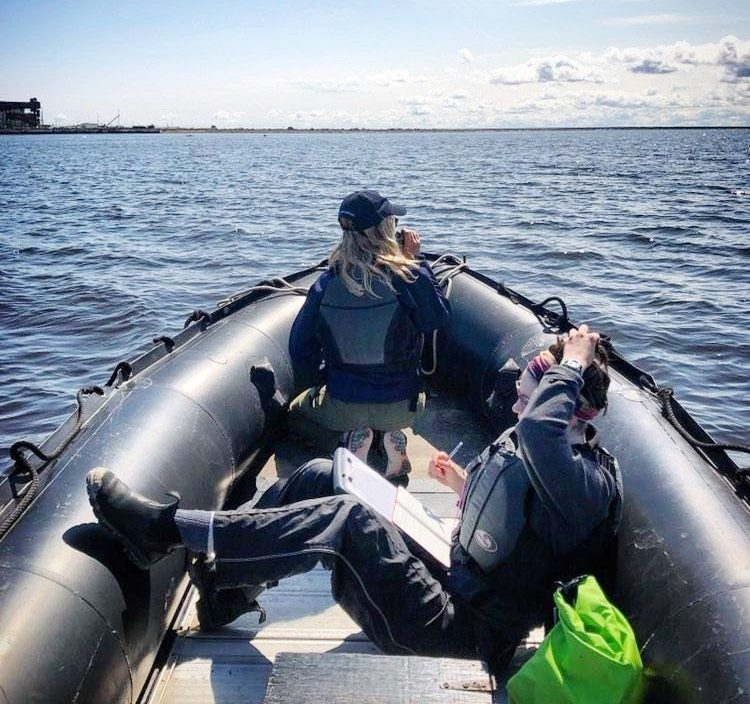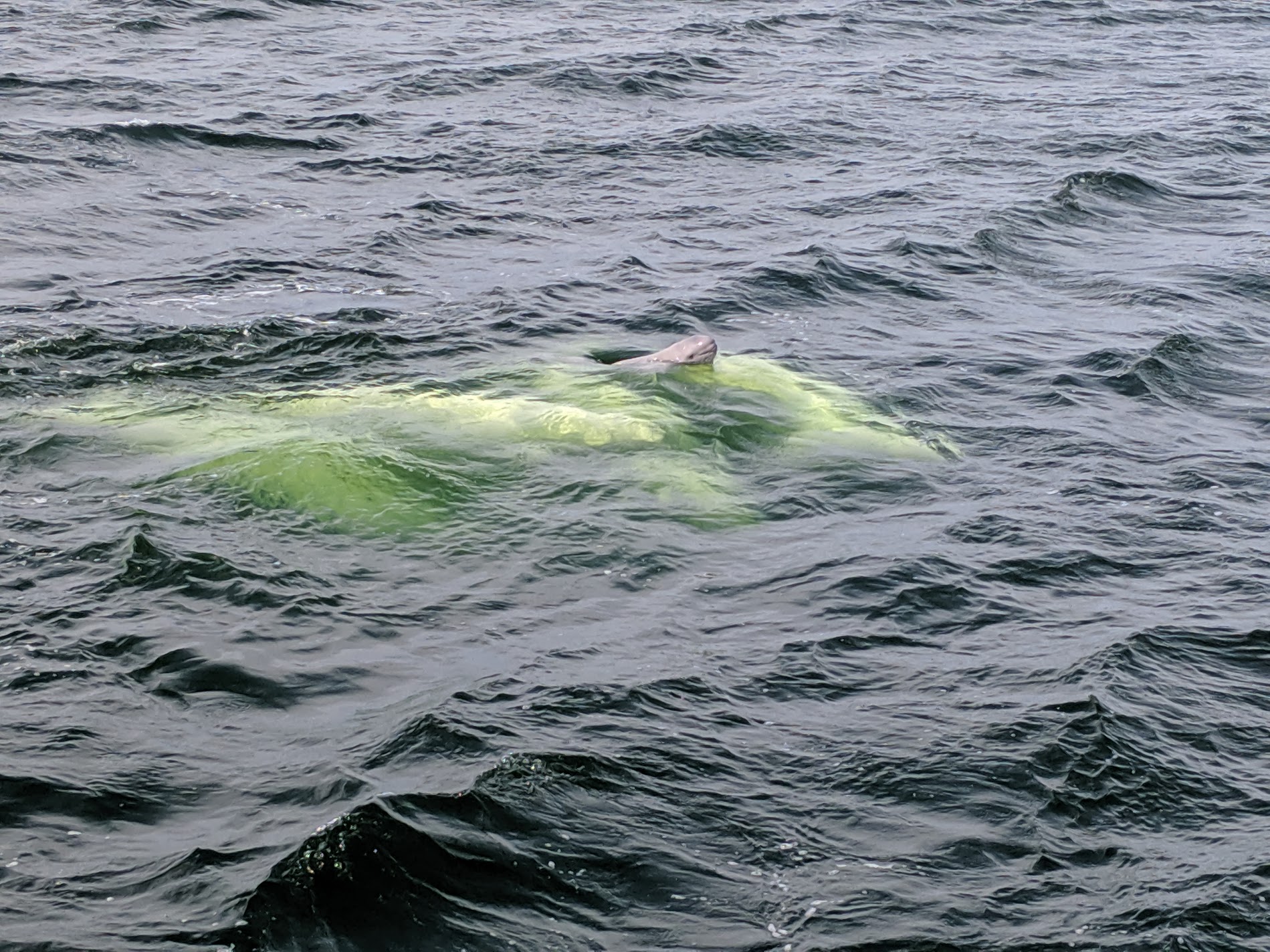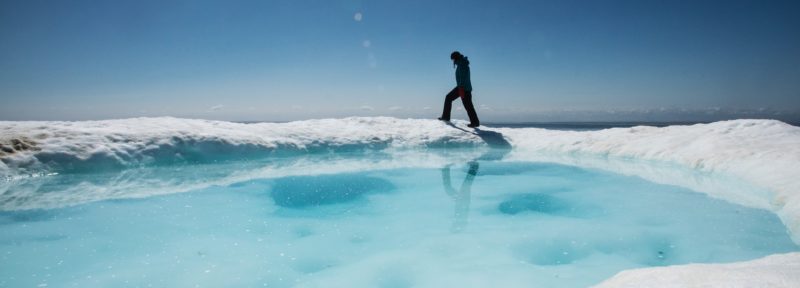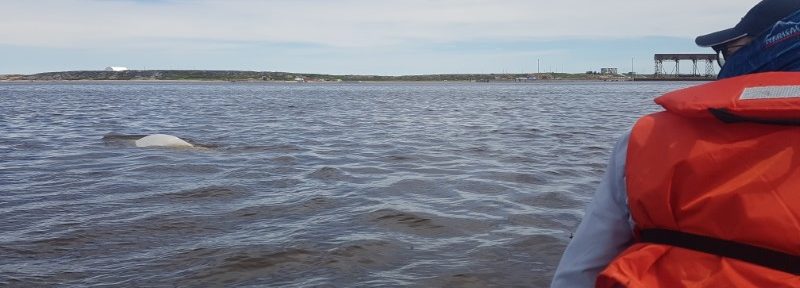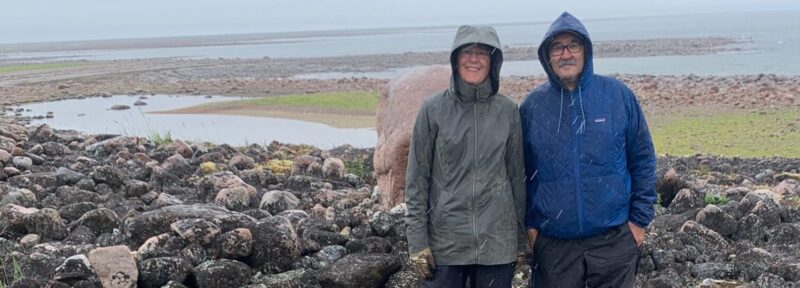Studying How Belugas Interact with Churchill’s Whale-watching Boats
An adult beluga whale approaches a tourist boat. Many thousands of tourists come to Churchill each summer wanting to see these white whales up close.
Credit: Jessica Sportelli for Oceans North
In July, Oceans North launched a study examining how beluga whales in Manitoba’s Churchill River spend their time and how they behave around whale watching boats and other tourism-related vessels. As a graduate student at Scripps Institution of Oceanography in San Diego, I was ecstatic to be asked to lead a two-person research team that went to Churchill to repeat a beluga behaviour study done here in 2005.
That study found no statistical difference in how these whales acted around boats. But updating our knowledge about this population of whales is important because so much has changed since then with regards to ocean health, increasing tourism and the number of people on the river.
To conduct the study, I needed to be on the water almost every day, but I couldn’t do it alone. Erica Gillis, a field tech at the Churchill Northern Studies Centre, joined my team.
Conducting field studies about beluga behaviour around whale-watching boats required many hours on the water.
Credit: Jessica Sportelli or Oceans North
Churchill is a very special place for beluga whales; they come into the Churchill River every summer to shed their skin, eat capelin, and have their babies. About 3,500 to 4,000 belugas are estimated to come into the river every year, and with them come many more tourists wanting the opportunity to see these white whales up close. In California, where I am from, you are lucky to see ONE humpback or blue whale in the distance on your whale watching tour. But in Churchill, you barely get out of the docks before you are surrounded with hundreds of curious, playful beluga whales wanting to swim in the jet stream and bump you around in your kayak.
For 33 days, Erica and I went to the docks at every high and low tide to watch how the belugas interacted and responded to vessels, kayaks, and zodiacs on the water. We took note of the number of belugas in each pod, if the pods were made up of grey juveniles or white adults, and how many newly born khaki-coloured calves we saw with their moms. As the month went on, there were multiple groups comprised of only calf and mom pairs – like a mommy-and-me playdate! Were they travelling away from the boat? Socializing with each other by rubbing and chasing? How long did large groups of whales feed and did they continue feeding when the boats drifted nearby? And how long did it take before they began to interact with the vessel, or kayaker? We also wanted to know how they spent their time when no boats were on the water, so Erica and I sat on the Port of Churchill wall and observed the whales going about their day in the absence of vessels.
Regardless of vessel presence, beluga feeding frenzies on capelin went on for hours. Arctic Terns dove and snatched fish with unbelievable accuracy, and sometimes a hungry harbor seal joined in. From the kayaks, we observed a calf being tossed around by a juvenile, I assume in an act of play. Twice from the boat, we observed a raft of 7 to 10 huge adults pushing what looked like a newly born calf up to the surface to breathe before the calf began swimming by itself. A sign of a birth perhaps? My desire for a picture of a beluga tail fluke in front of a sunset was crushed, considering belugas don’t throw their tail flukes up very often, nor do they breach like a humpback or killer whale does. We were able to recognize a few juveniles that had identifiable markings; “Freckled Friend” was a light grey juvenile with a dark blow hole and dark grey freckles around its melon, and “Ringo” had light grey, almost perfect circles against its dark grey skin.
A raft of adult belugas push a newborn calf up to the surface to breathe before it is able to swim by itself.
Credit: Jessica Sportelli for Oceans North
I was curious if seeing beluga whales in the wild would get old, but every day was like seeing them for the first time. Erica and I had the absolute pleasure of being chased, splashed, and grunted at by these charismatic animals. There is something magical about making direct eye contact with one, knowing they are just as curious about you as you are of them. It reminds me that I am only a small part of the world, and I find my motivation to continue this type of conservation research in the eyes of these whales.
With so many threats to marine life these days (decreasing sea ice, overfishing, boat strikes and ship noise – to name a few) I want to find ways to ensure that the Churchill River remains a safe place for belugas and that the tourists who save up for years to see them can have these soul-deep connections too. Propeller guards and jet dry vessels are a great start. What else can we do?
This population in Churchill seems to be doing really well, especially in comparison with the endangered population in the St. Lawrence River on the east coast of Canada. It is important to study and understand how healthy populations function because they can serve as a baseline for what an unhealthy population lacks and how conservation scientists can help. Seeing this healthy population and being in a town that respects their presence was wonderful, especially in a time when news about biodiversity seems to be all doom and gloom. Even though my time in Churchill was brief, I knew in an instant that this is an important and special place for whales and humans alike.
Jessica Sportelli is a graduate student at Scripps Institution of Oceanography in San Diego, CA, where she works in the Scripps Whale Acoustic Lab with a focus on Arctic whale bioacoustics and ecology, or the sounds whales produce and how those are used to understand their lives.

